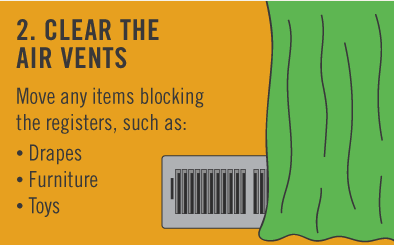The Ultimate Guide To Understanding Warmth Pumps - Exactly How Do They Work?
The Ultimate Guide To Understanding Warmth Pumps - Exactly How Do They Work?
Blog Article
Material Written By-Whitfield Raymond
The best heatpump can conserve you considerable amounts of money on power expenses. They can additionally help in reducing greenhouse gas exhausts, specifically if you make use of electrical energy instead of fossil fuels like propane and heating oil or electric-resistance heaters.
Heatpump function quite the like ac system do. This makes them a practical choice to typical electric home furnace.
Just how They Work
Heatpump cool homes in the summertime and, with a little aid from electricity or gas, they provide several of your home's home heating in the winter months. They're an excellent option for people that want to reduce their use of fossil fuels however aren't all set to replace their existing heater and cooling system.
They rely on the physical fact that even in air that appears as well chilly, there's still power present: warm air is always relocating, and it wants to relocate right into cooler, lower-pressure atmospheres like your home.
The majority of ENERGY celebrity licensed heatpump run at near their heating or cooling capability throughout the majority of the year, decreasing on/off cycling and conserving energy. For the very best performance, concentrate on systems with a high SEER and HSPF rating.
The Compressor
The heart of the heatpump is the compressor, which is likewise known as an air compressor. This mechanical moving device makes use of potential energy from power production to enhance the stress of a gas by reducing its volume. It is various from a pump in that it just deals with gases and can't work with liquids, as pumps do.
Atmospheric air gets in the compressor with an inlet shutoff. https://www.bobvila.com/slideshow/10-cleaning-chores-you-should-be-doing-every-month-578654 vane-mounted arms with self-adjusting size that split the interior of the compressor, producing numerous tooth cavities of varying size. The blades's spin pressures these cavities to move in and out of stage with each other, pressing the air.
air conditioners attracts the low-temperature, high-pressure cooling agent vapor from the evaporator and presses it into the hot, pressurized state of a gas. This process is duplicated as required to provide home heating or cooling as required. The compressor additionally has a desuperheater coil that recycles the waste warmth and adds superheat to the refrigerant, transforming it from its liquid to vapor state.
read here in heat pumps does the exact same point as it does in refrigerators and ac unit, transforming fluid cooling agent into a gaseous vapor that removes heat from the area. Heatpump systems would certainly not work without this vital piece of equipment.
This part of the system is located inside your home or structure in an interior air handler, which can be either a ducted or ductless unit. It has an evaporator coil and the compressor that presses the low-pressure vapor from the evaporator to high pressure gas.
Heatpump take in ambient warm from the air, and after that make use of electricity to move that warm to a home or organization in heating mode. That makes them a whole lot a lot more power effective than electric heaters or heaters, and since they're using tidy power from the grid (and not melting gas), they also generate much fewer emissions. That's why heat pumps are such wonderful environmental selections. (In addition to a massive reason why they're ending up being so popular.).
The Thermostat.
Heatpump are excellent options for homes in cool climates, and you can use them in mix with traditional duct-based systems or even go ductless. They're a terrific alternative to nonrenewable fuel source furnace or traditional electrical heating systems, and they're extra lasting than oil, gas or nuclear cooling and heating equipment.
Your thermostat is one of the most crucial part of your heat pump system, and it works extremely in a different way than a conventional thermostat. All mechanical thermostats (all non-electronic ones) work by utilizing substances that alter dimension with boosting temperature, like coiled bimetallic strips or the increasing wax in a vehicle radiator shutoff.
These strips contain two different sorts of metal, and they're bolted together to develop a bridge that completes an electrical circuit attached to your HVAC system. As the strip obtains warmer, one side of the bridge broadens faster than the other, which triggers it to flex and indicate that the heating unit is required. When the heatpump remains in home heating setting, the turning around shutoff turns around the flow of cooling agent, so that the outdoors coil currently works as an evaporator and the indoor cylinder becomes a condenser.